Abstract
In field experiments in different breeding sites in a shaded suburban area, 7-40% of A. aegypti eggs survived a 120-day dry period. In a relatively unshaded coral area, only 3-23% of eggs survived 60 days in exposed sites, but 7-17% survived 120 days in shaded sites. Survival in some sites was higher than in the laboratory at constant conditions.
Full text
PDF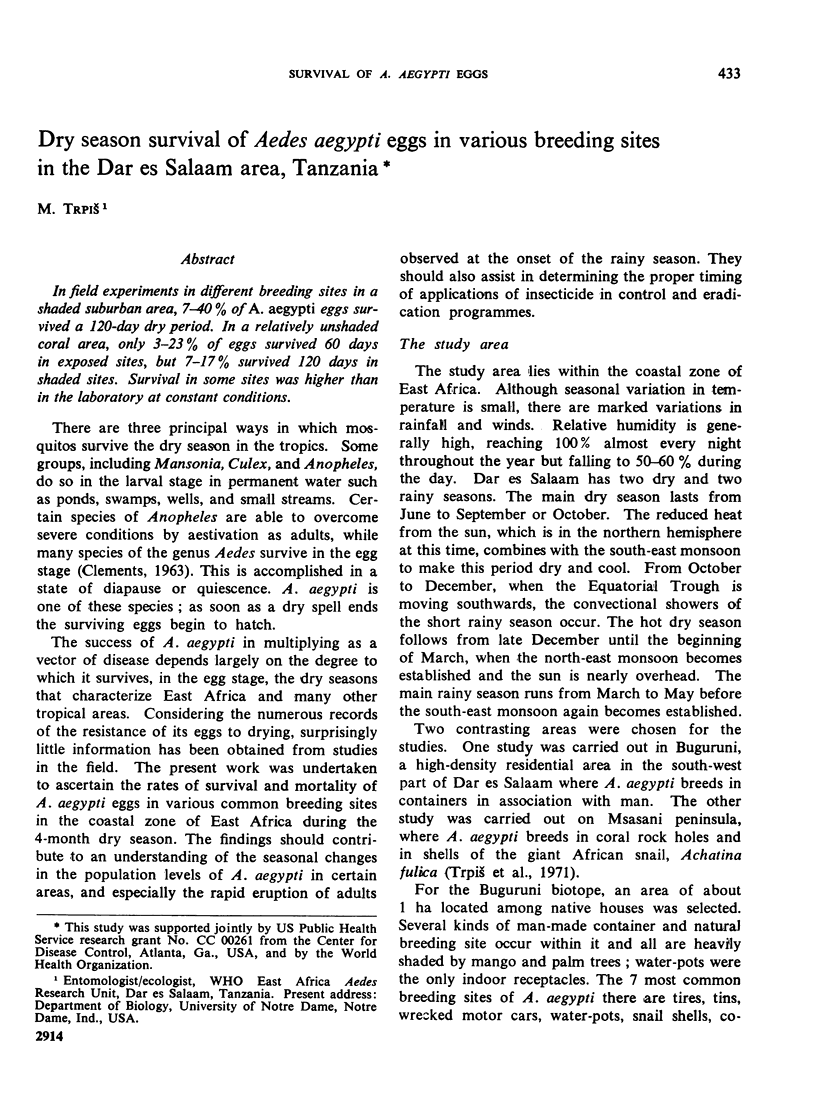
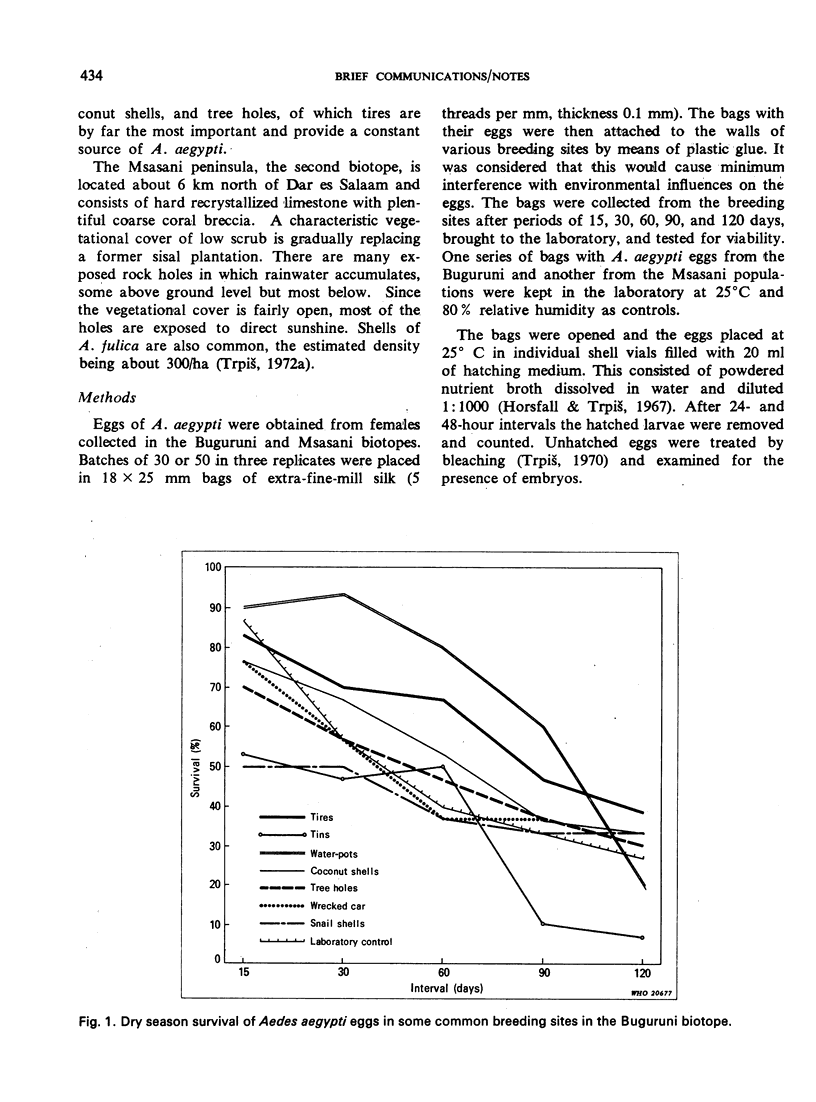
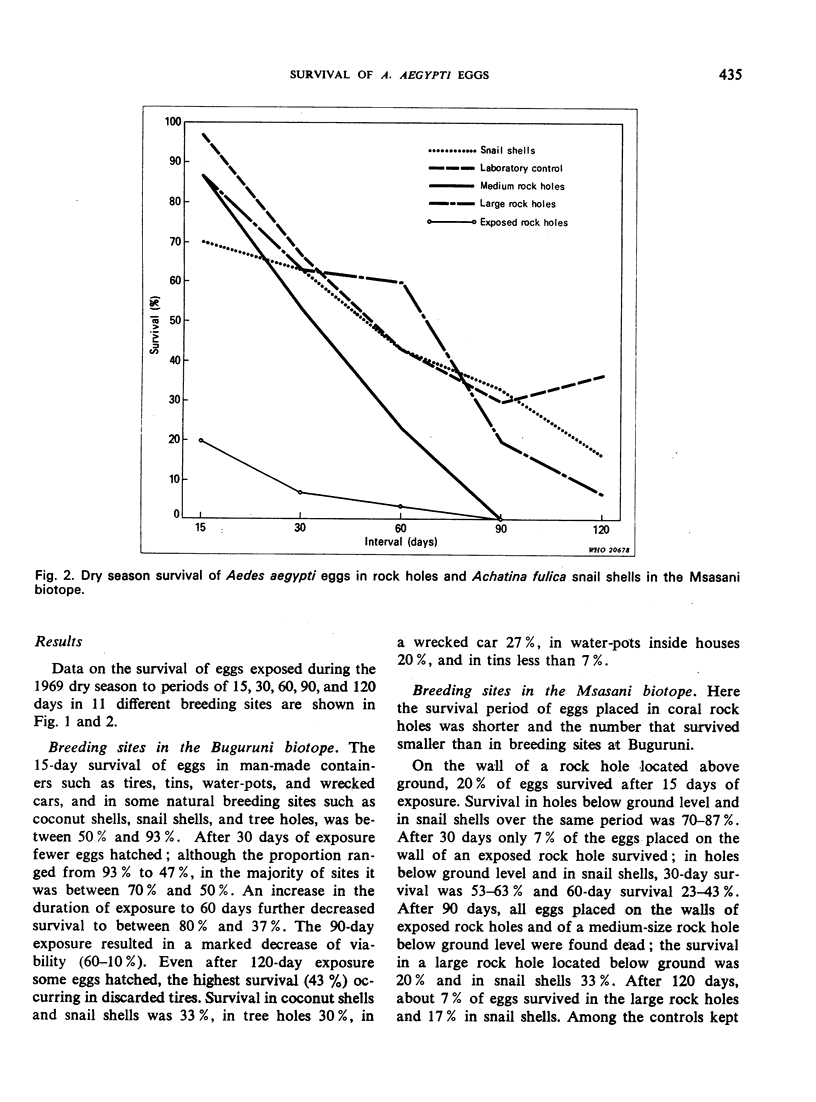
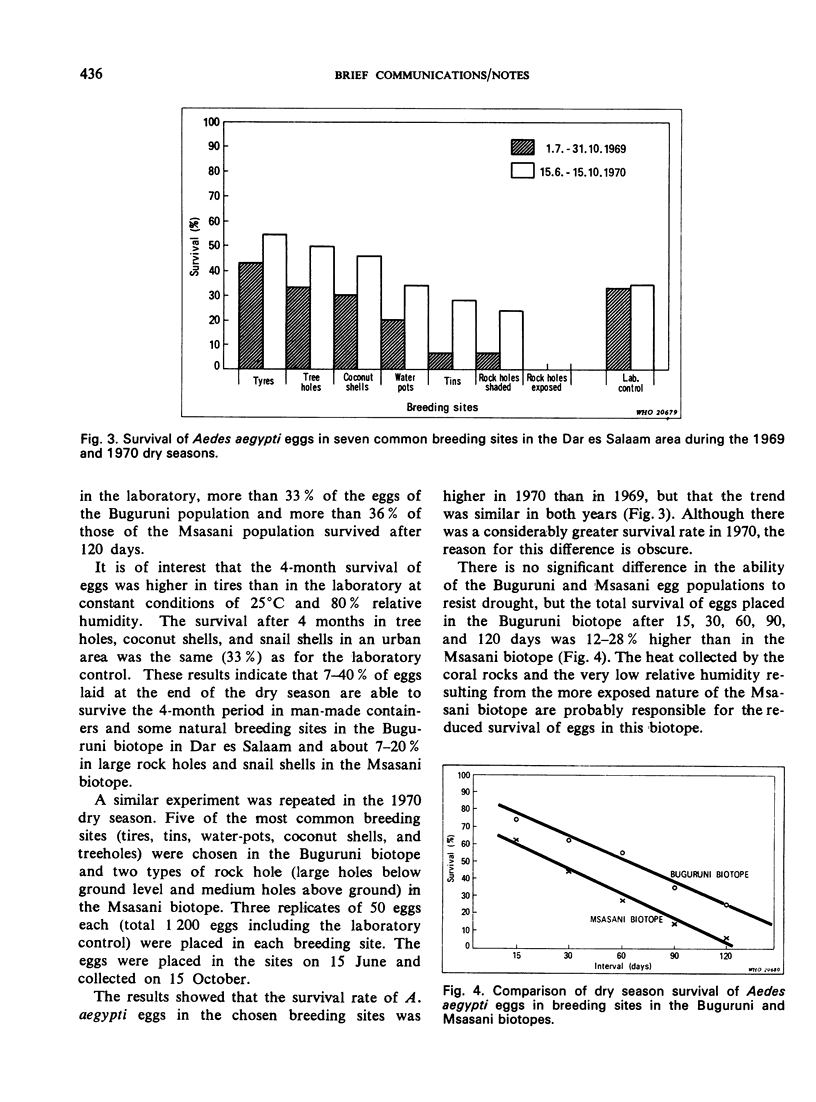
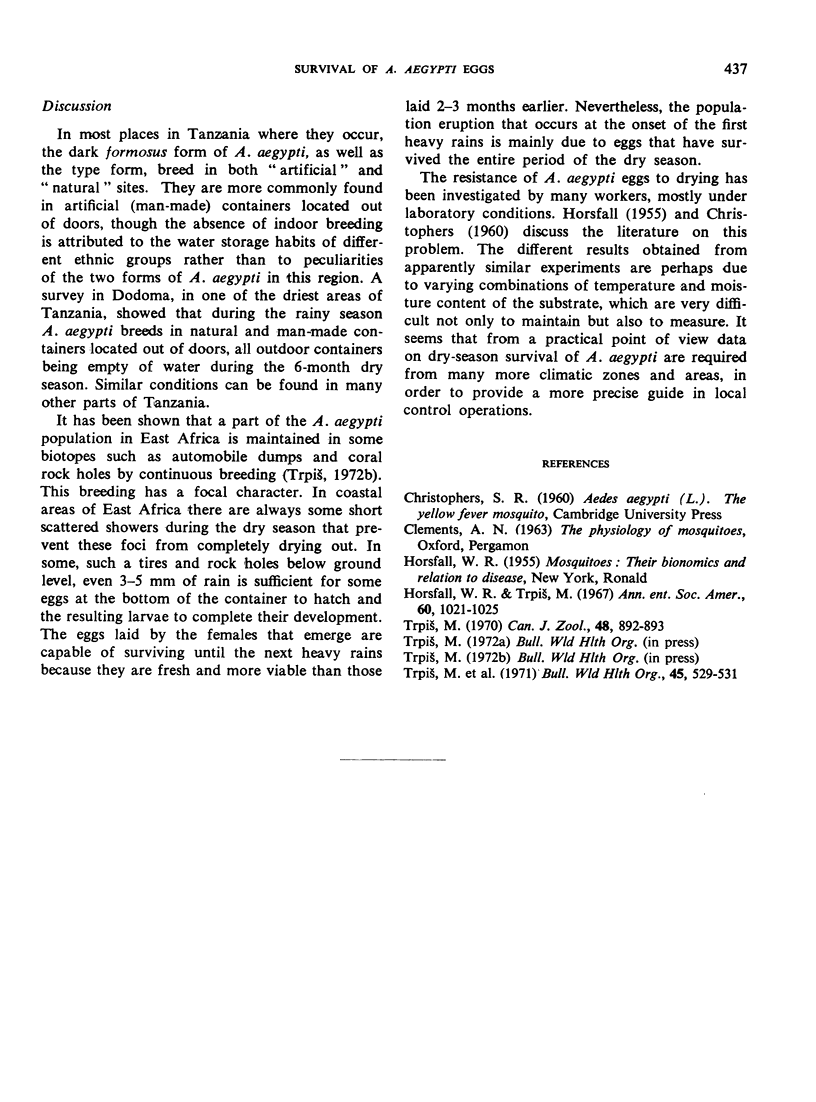
Selected References
These references are in PubMed. This may not be the complete list of references from this article.
- Horsfall W. R., Trpis M. Eggs of floodwater mosquitoes. X. Conditioning and hatching of winterized eggs of Aedes sticticus (Diptera: Culicidae). Ann Entomol Soc Am. 1967 Sep;60(5):1021–1025. doi: 10.1093/aesa/60.5.1021. [DOI] [PubMed] [Google Scholar]
- Trpis M., Hartberg W. K., Teesdale C., McClelland G. A. Aedes aegypti and Aedes simpsoni breeding in coral rock holes on the coast of Tanzania. Bull World Health Organ. 1971;45(4):529–531. [PMC free article] [PubMed] [Google Scholar]


